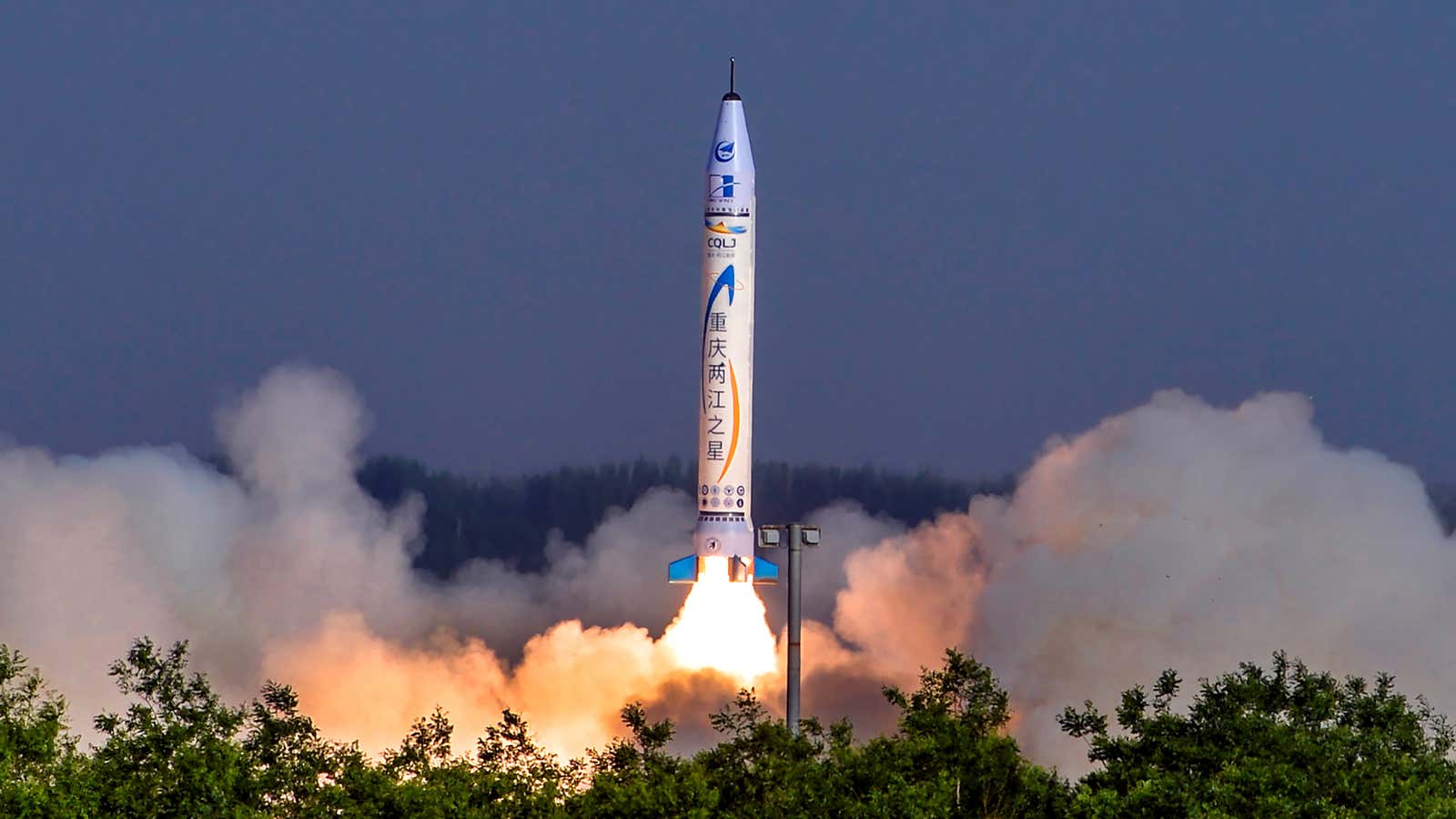OneSpace launched a rocket 40 kilometers (25 miles) into the air on May 17, the first such demonstration by a private company as China urges its aerospace industry to match space technology developed in the US.
The nine-meter-tall rocket, powered by a solid propellant motor rather than a liquid-fueled rocket engine, is called the OS-X, and is designed to carry 100 kg (220 lbs) of payload into space. OneSpace founder and CEO Shu Chang says he hopes to launch as many as 10 small satellites a year once the vehicle can reach orbit, while developing larger rockets for bigger spacecraft.
Governments and businesses alike are ploughing money into small satellites; thanks to advances in chip and battery technology, they have the capacity to do what much larger spacecraft can at a fraction of the cost. An equally fierce competition has emerged to launch these satellites, with companies like Vector, Virgin Galactic, and Rocket Lab working to build the small rockets needed to launch them cheaply. Rocket Lab put its first satellites in orbit this year.
A OneSpace spokesperson told Quartz the firm had designed, built, and launched its rocket with less than 500 million yuan ($78 million) in private funding, but didn’t reveal the specific number or the source of the investment. That makes this a cheap and relatively fast development program. OneSpace did not say how much its rocket would cost, but competitors with similarly sized rockets predict prices of $5 to $6 million per flight.
The use of solid propellant, which requires a less complex design and manufacturing process, could reduce upfront costs and speed launches. But it could also prove uncompetitive if reusable rockets designed by SpaceX, Blue Origin, and others are successful at driving down the price of putting a satellite in orbit, or flexible liquid-fueled engines prove more attractive to potential customers.
How private is private?
While China’s space program offers commercial launches to orbit, international companies looking to purchase flights face restrictions about working with the space program there because it is seen as closely linked to the military. In 2017, China performed one commercial satellite mission; SpaceX launched 12, and Europe’s Arianespace launched nine.
Chinese aerospace engineers have been impressed by the reductions in cost and growing capability of private companies like SpaceX. OneSpace is one of a handful of Chinese firms aiming to learn from that success; others include Landspace and Linkspace. (Dear rocket makers around the world: more creative names, please.)
But questions remain about their links to the government. Landspace told Quartz in 2016 that its technology included a flight-proven rocket motor, indicating a design previously flown by the Chinese space program. OneSpace was paid for this flight by the state-owned Aviation Industry Corporation of China, and named its test rocket “Chongqing Liangjiang Star” after a state-backed Chongqing Liangjiang Aviation Industry Investment Group, which co-invested in their manufacturing facility.
This isn’t unusual in the space world: Arianespace, Boeing, and Lockheed Martin, the largest Western space contractors, rely on government revenue. The Japanese and French governments have announced new funds to back space startups. Even SpaceX, an outlier in terms of its private-sector focus, needed development funding from NASA and the US military to launch its first rockets, though they were entirely designed in-house.
The real question is whether OneSpace’s technology will be competitive enough to stand on its own in the world market.
“Many compare us to SpaceX but to be honest, the gap is more than a little,” Shu told CNN.
Echo Huang provided additional reporting from Hong Kong.
